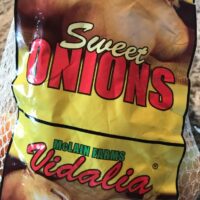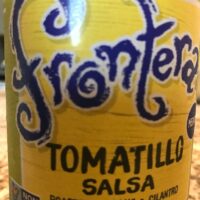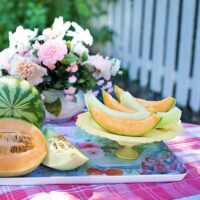Vidalia Onions, Salsa, and Qigong
In case you haven’t noticed, it’s still possible to find Vidalia onions in local stores. I’m not sure how long they will last, so now is the time to snatch them up.
They are deliciously sweet and perfect on a burger or cooked with your veggies.
Onions contribute to your overall good health. They contain lots of nutrients, antioxidants, and have antibacterial properties.
An interesting fact: The State of Georgia passed legislation in 1986 giving Vidalia onions legal status defining a 20-county-only production area. Only these 20 counties can produce and market the official Vidalia onion. 
The problem I’ve experienced in the past is that Vidalias go bad quickly in my storage bin. A good friend of mine gave me a tip on how to store them, and all onions, so that they last quite a long time.
Wrap each bulb individually in a paper towel, which will help absorb moisture, and place them in the crisper of your refrigerator with the vents closed. A few will naturally go bad, but many will keep for months.
In the movie, Holes, the boys ate raw onions that they found while roaming in the desert. Turned out that the nasty poisonous lizards wouldn’t bite them, for whatever reason. This info may come in handy one day…onions are good.
Salsa
Salsa is great to have on hand for snacking, flavoring dishes, and as a complement to your morning eggs.
It can be tricky finding one that suits your taste buds. I recently gave the Frontera brand a try, on the advice of my son, Ryan. He said, “It’s so good that you can drink it right out of the jar.”
There are several varieties. I brought home the Tomatillo Salsa with roasted serrano and cilantro. It’s got a medium kick to it, which I find to be just right. 
One of the things I look for in salsa is low to no sugar. This one has less than 1 gram of sugar. For those of you who are concerned with calories, there are 10 in 2 tablespoons, and 150mg sodium.
I’m guessing the salsa is named after the Frontera Grill, Chef Rick Bayless’ flagship Mexican restaurant in Chicago. No wonder the salsa is good enough to drink.
Qigong
I needed to shake things up a bit, so I tried something new to me.
I tried a Qigong class. “Chi gong” was developed in China thousands of years ago as part of traditional Chinese medicine. It involves using exercises to optimize energy within the body, mind, and spirit, with the goal of improving and maintaining health and well-being.
When I signed up, all I could think of was “wax on, wax off,” from the Karate Kid. We didn’t do that.
We focused on slow, repetitive, movements that came about from our breathing. First, we breathe, then we move.
In general, we are all in too much of a hurry about many things. This is a meditative practice that forces one to slow down. Take away momentum, and you have a workout.
It was exactly what I needed in the moment.
Sending you love,
Health Coach Carol
“In rivers, the water that you touch is the last of what has passed and the first of that which comes; so with present time.” – Leonardo da Vinci








